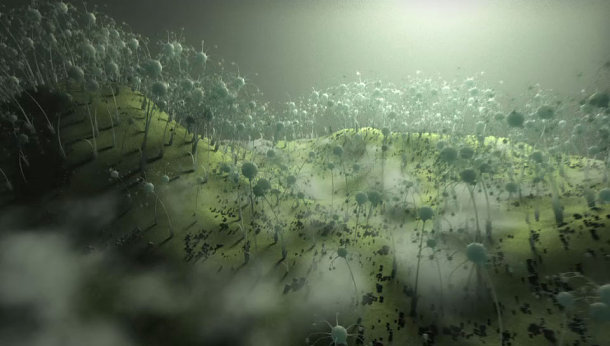Carbon Scatter for 3ds Max enters open beta

Carbon Scatter image created by Sascha Geddert.
Vue developer e-on software has announced the open beta of Carbon Scatter, its instancing plug-in for 3ds Max.
The tool makes much of the power of Vue’s popular EcoSystems available natively in Max, enabling users to create scenes with thousands or millions of instanced objects. Versions for other major 3D apps are in development.
The terms of use for the beta version permit commercial work, although an honesty system is in place in which users must purchase a full licence once the software is eventually released. The beta also expires on the commercial release.
Well worth a look, we’d say. More details below.
PRESS RELEASE (Excerpts)
e-on software, the leader in Digital Nature solutions today announced the immediate availability of a free Open Beta of Carbon Scatter, the company’s instancing plugin for the mental ray and V-Ray renderers for 3ds Max.
Carbon Scatter is the most simple and straightforward solution for creating complex and detailed populations using the native instancing technologies of 3ds Max, Maya, Softimage, Cinema 4D or LightWave*.
Carbon Scatter integrates e-on’s patented EcoSystem algorithms directly inside the end user’s favorite 3D application, allowing the population of native scenes with millions of instances and rendering them with the user’s renderer of choice.
*Carbon Scatter currently works with Mental Ray and V-Ray for 3ds Max. Versions for Maya, Cinema 4D, LightWave and Softimage are currently under development.
Some of the features of Carbon Scatter include:
- Automated Smart Scattering
Carbon Scatter does not merely scatter the objects randomly across the underlying surface, but actually computes where to place them according to the relief of the underlying geometry. For example, as in nature, more trees will grow on flat terrains than on steep slopes, and no objects will be placed where they are likely to “fall down”. - Paint Objects and Plants with the EcoPainter
The EcoSystem painter tool (EcoPainter) lets the user interactively paint instances over any surface (or group of surfaces). Painted instances can be attached to the underlying surface so they move together with the surface, or they can be independent. Painting can be performed with a mouse or with a tablet, which gives you the ability to control additional parameters through pressure. - Advanced EcoSystem Control
Multiple plants can be dragged from the plant browser into the EcoSystem population list, making the preparation of complex EcoSystems much quicker. When painting EcoSystems, users can paint with the underlying EcoSystem material rules applied, so that, for instance, the influence of slope and altitude or the sizing rules are taken into account. - Powerful Layered EcoSystem Materials
EcoSystems behave just like regular materials. A single EcoSystem material can have any number of layers, each layer with its own population list and full set of controls. Users can easily influence EcoSystem populations according to altitude, slope or orientation, or even take advantage of Carbon Scatter’s powerful function graph to control almost every aspect of the population. For example, artists can use a fractal noise generator to control the distribution instances, or use a bitmap to limit distribution to specific areas. On top of this, the population density can also depend on time.
A complete and detailed list of features will be made available closer to the final release.
Open Beta
Immediately available, the Carbon Scatter Open Beta is a free, fully functional version of Carbon Scatter for the mental ray and V-Ray renderers for 3ds Max 2009, 2010 and 2011.
The application will expire shortly after the beta period. Commercial work is allowed with the Open Beta, provided that users purchase a full license of the product as soon as it is released commercially.
The Carbon Scatter Open Beta is available in English for Windows XP, Vista and Windows 7 (32 and 64 bits).
